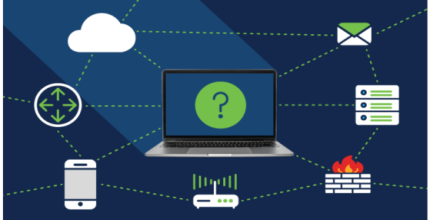
Cybersecurity : Protecting Your Network from Threats
While connecting is crucial, keeping your network secure is just as important. Cybersecurity threats are increasingly sophisticated, and data breaches can have devastating consequences for individuals and businesses alike. To protect your network, follow these expert tips:
1.Use Firewalls and Intrusion Detection Systems (IDS)
•Firewalls serve as the first line of defense against unauthorized access. Hardware firewalls like Cisco ASA or pfSense are crucial for small to large-scale networks, offering advanced filtering and security policies.
•IDS tools like Snort or Suricata help detect unusual network behavior, flagging potential intrusions and suspicious activities before they escalate.
2.Secure Wi-Fi Networks
•Use WPA3 encryption for Wi-Fi networks to secure wireless communication. Avoid using outdated protocols like WEP, which are easily hackable.
•Change the default router settings and ensure strong, unique passwords for your Wi-Fi network. Avoid using generic passwords and consider using a password manager to generate complex, secure passwords.
3.Multi-Factor Authentication (MFA) MFA adds an additional layer of protection by requiring more than just a password to access a network or system. By using something you know (a password) and something you have (a mobile device or hardware token), you drastically reduce the chances of unauthorized access. Implement MFA on all accounts that support it, especially those with sensitive data.
4.Patch Management Keeping software and firmware up-to-date is essential for defending against known vulnerabilities. Implement a robust patch management strategy, ensuring that all devices and systems are updated regularly to protect against cyberattacks.
5.Educate Employees and Users Human error is often the weakest link in network security. Regular cybersecurity training for employees, including how to identify phishing emails, handle sensitive data, and follow best security practices, is crucial in preventing cyberattacks.
6.Network Segmentation Segmenting your network into different zones can help minimize damage in the event of a breach. For example, you could create separate networks for employees, guest access, and IoT devices. This way, even if one segment is compromised, the others remain secure.
Cloud Networking: The Future of Connectivity
As more businesses transition to cloud-based infrastructures, cloud networking solutions are increasingly becoming a vital part of modern networks. Cloud networks offer flexibility, scalability, and cost savings, but they also introduce new security challenges.
1.Adopt Cloud Security Best Practices
•Use cloud-native security tools offered by providers like Amazon Web Services (AWS), Microsoft Azure, or Google Cloud to manage access and encryption.
•Implement identity and access management (IAM) policies to restrict access to only authorized users.
2.Leverage Hybrid Cloud Solutions Hybrid cloud solutions allow businesses to manage their on-premise and cloud environments simultaneously. They offer the flexibility to keep critical applications on private servers while utilizing the cloud for scalable resources and storage. Hybrid cloud solutions also enable businesses to better control their security protocols.
The Role of Automation in Networking and Security
One of the key trends in networking and security today is the increased use of automation. As network complexities grow, it’s becoming more difficult to manage everything manually. Here’s how automation can help:
•Automated Monitoring and Alerts: Networking tools like PRTG Network Monitor and SolarWinds allow for automatic network monitoring and alerting. This ensures that potential issues are caught before they become major problems.
•Security Automation: With automation tools, cybersecurity protocols can be triggered without manual intervention. This helps in rapidly responding to threats, such as deploying security patches, blocking malicious traffic, or quarantining infected devices.




